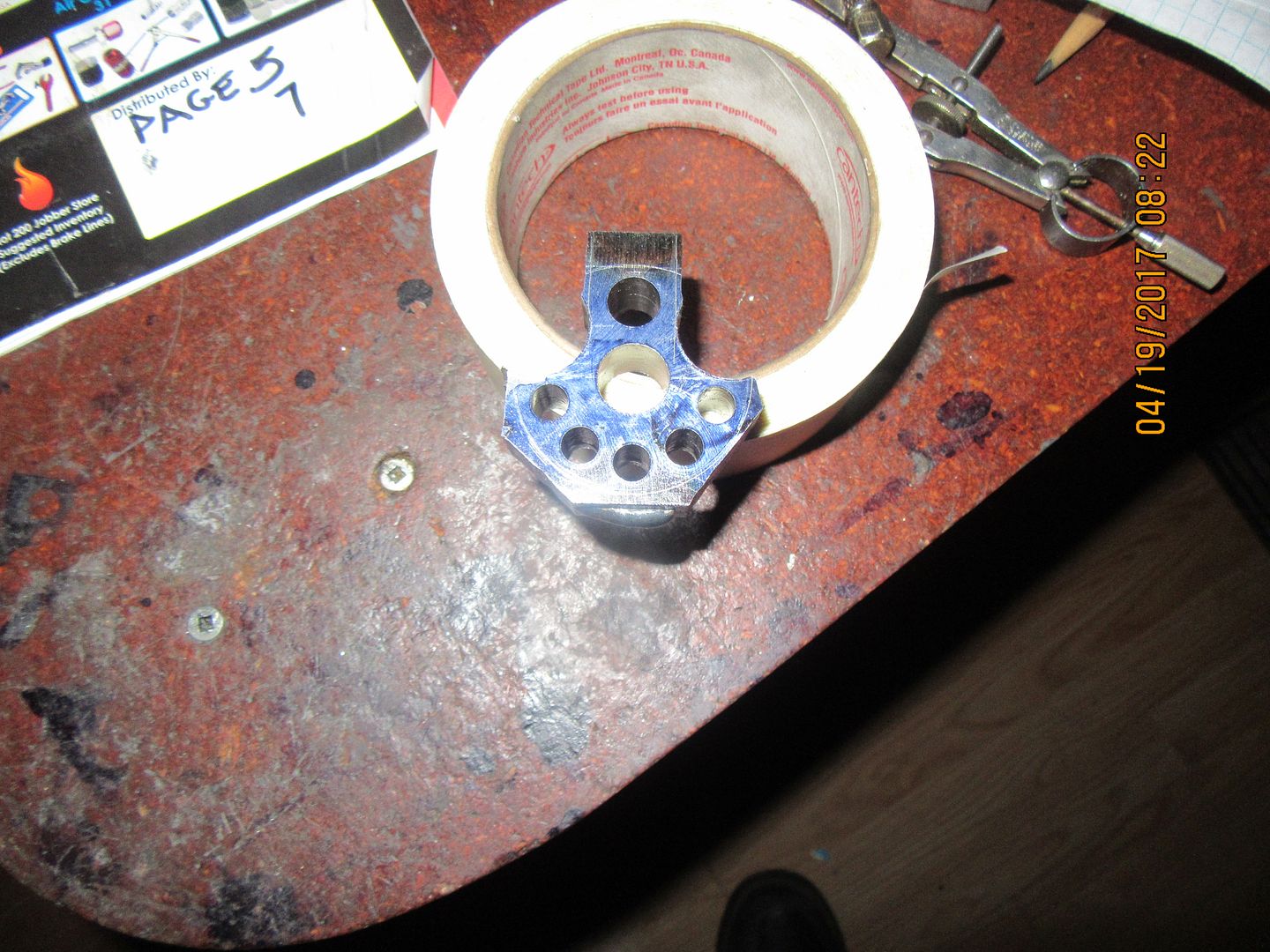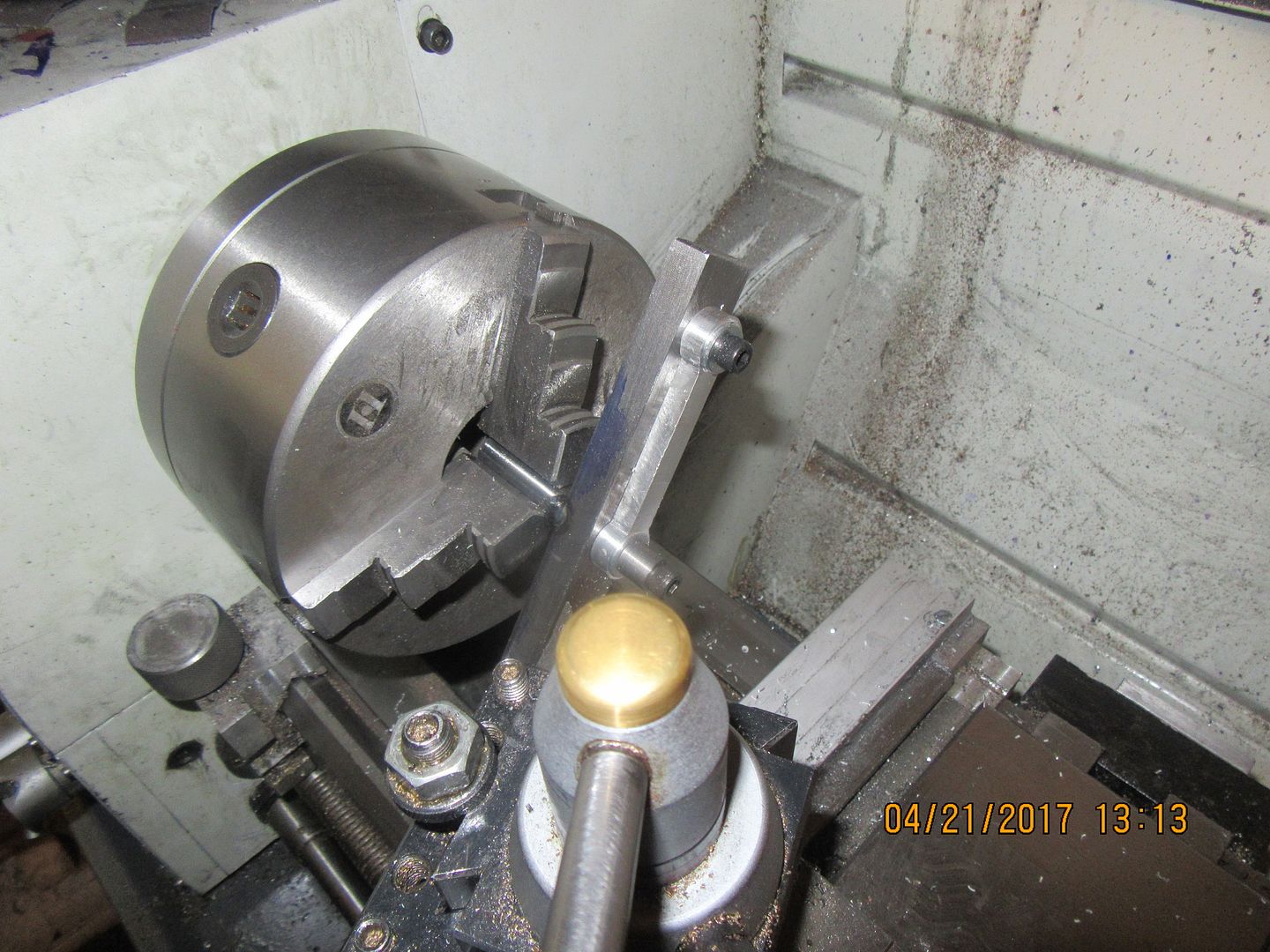So, here we go again, making it up as I go along. What are you looking at?--Well, I don't have any 5/16" plate, but I do have some 2" x 3/8" steel flatbar. First job was to mill a length of it long enough to make 2 crankshaft webs down to 5/16" thick. Next step was to lay out the profile on one end of the milled down section. Then cut that end off, clamp it tightly to the remaining piece, and run a bead of weld on both sides about half an inch long. This ensures two things. Most importantly, that any holes thru part #1 are going to be dead nuts in line with any holes in part #2. A secondary benefit is that I only have to drill and ream any holes one time. I don't do this in my mill vice, because I don't trust it not to "cock up" a little bit when I tighten the vice. This results in very bad juju on crankshaft webs. I will put a sacrificial piece of plate between this bar and my milling machine bed, and clamp it to the bed for all the drilling and reaming. I will then saw and mill away everything that doesn't look like a crankshaft web, leaving the two welded areas until the very last step before I separate the two pieces. They will be match marked with a center punch so that I don't reverse one or the other when assembling the crankshaft. Crankshafts are one of the things where "Close really does count".


















